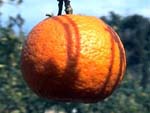|
Hi there, evening bird,
at what tree will you be?
I'll stay at a mulberry tree
If there is no mulberry tree,
at what tree will you be?
I'll stay at a fu-nya-ragy tree
If there is no fu-nya-ragy tree,
at what tree will you be?
I'll stay at a kazama tree
If there is no kazama tree,
at what tree will you be?
When children see that little birds are flying about in the evening, they imagine where the birds will sleep for the night. This song may be a dialogue between the children and the birds (or a monther and her child). It has a repeating gentle and beautiful melody (the first passage).
translated from the Japanese by This is My Home Literary Trajections
This nursery rhyme was collected in Hirara city, Miyakoshima island, Okinawa. Recorded in a musical note by Yoshihiro Takaesu. It is included in "Nursery rhymes in Kagoshima and Okinawa" published by Yanaihara Shoten.
[footnote]
1. Miyakojima is a southwest island in Okinawa prefecture in Japan.
2. fu-nya-ragy tree = The origin is Indochina, and it came to Okinawa going through the south of China. A kind of citrus tree, the scientific name is "Citrus nobilis Lour" (Rutaceae family, Citrus genus). It is an evergreen tree, about 3m tall.
 Photograph by Takashi Minakata Photograph by Takashi Minakata
3. kazama tree= It is also called gajumaru tree, or banyan tree. The scientific name is Ficus retusa. It is an evergreen tall tree, sometimes over 20m in the rain forest. (mulberry family, fig genus)
|
|
|